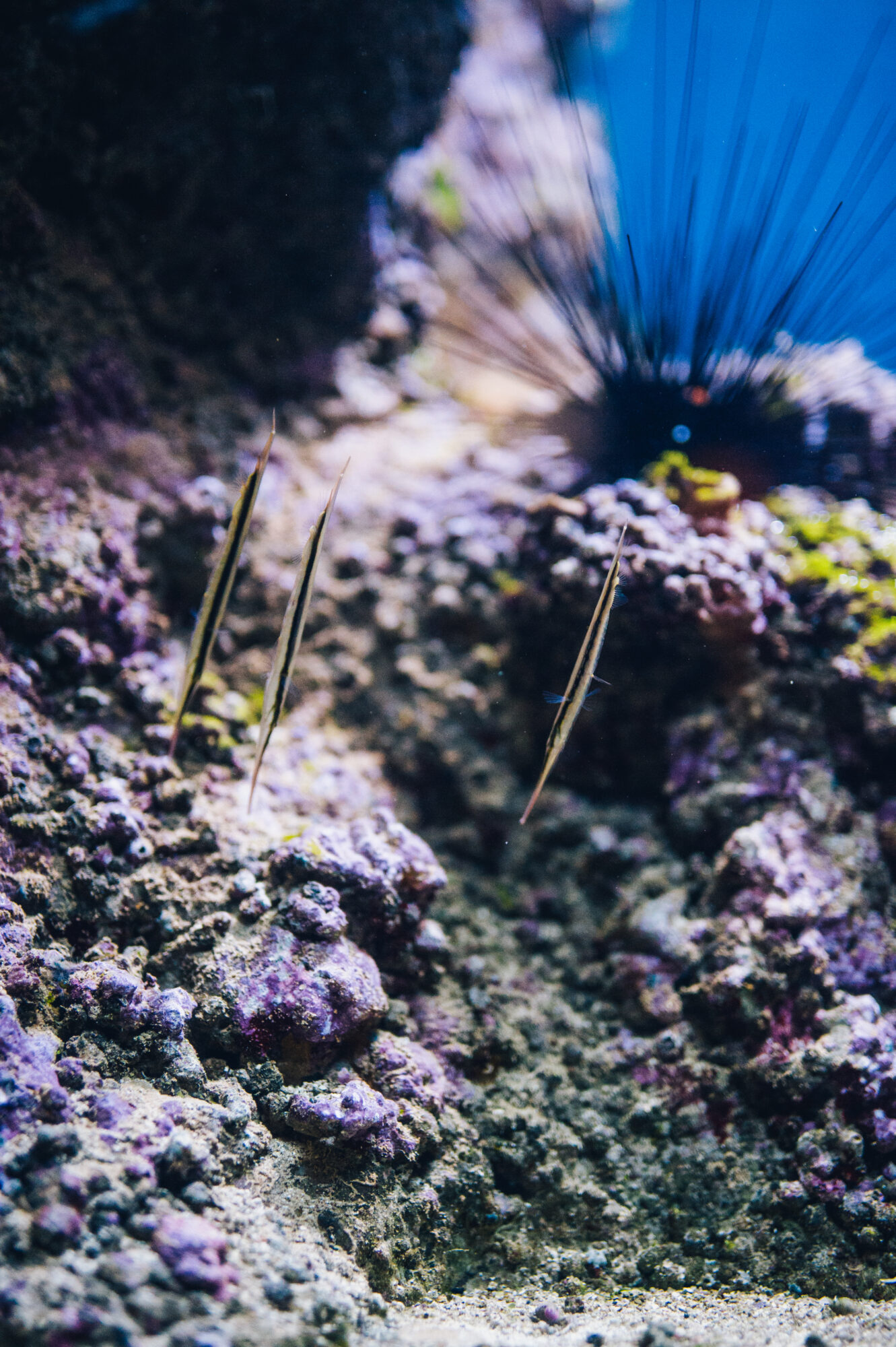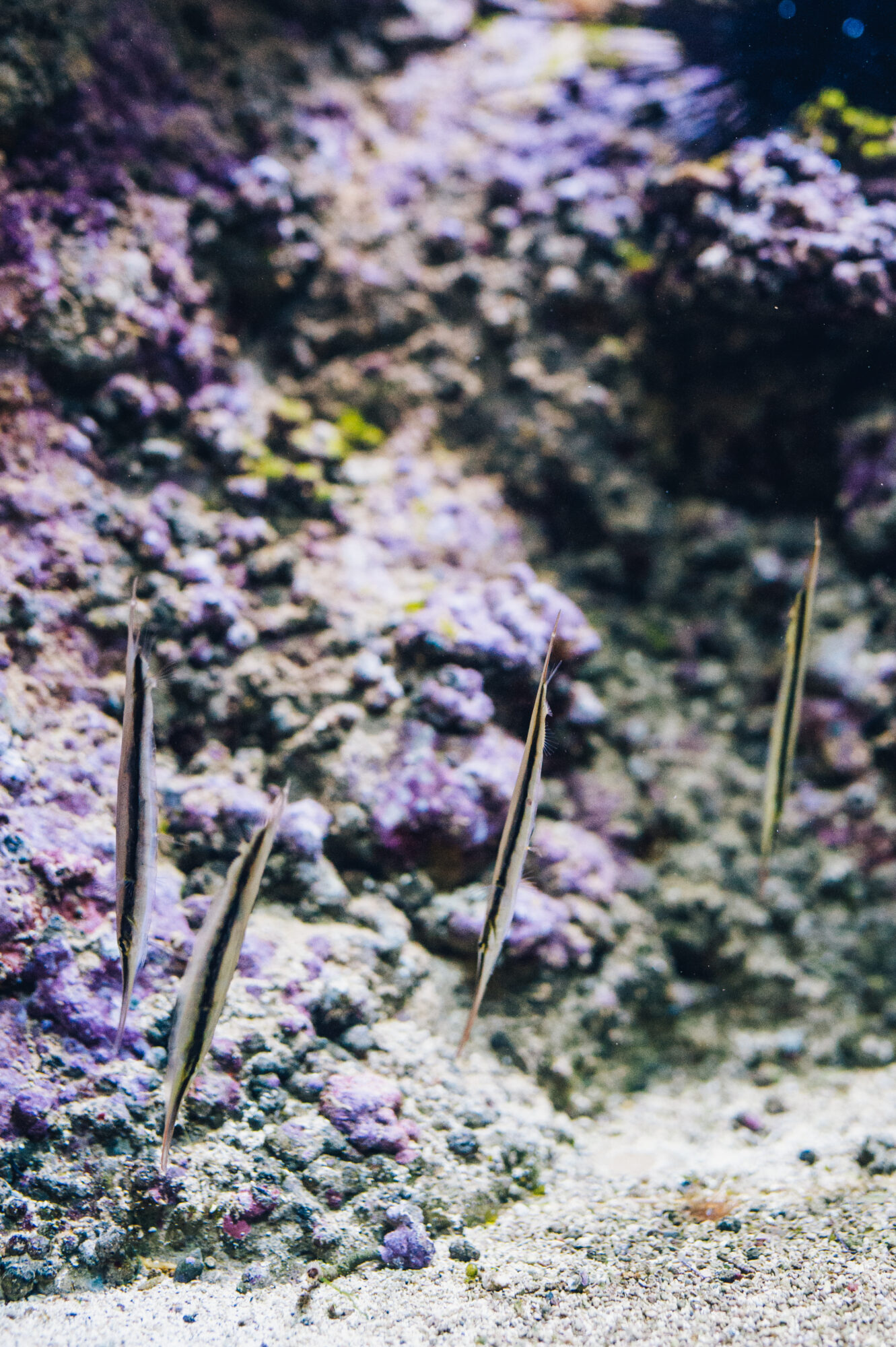Aeoliscus strigatus
Order: Syngnathiformes | Family: Centriscidae


Distribution
This species inhabits the tropical waters of the Indo-West Pacific, from East Africa to Australia, including Southeast Asia. Its habitat includes coastal waters ranging in depth from 1 to 42 meters, where coral reefs, seagrass, or Black long spine urchins are present. The razorfish swims in large, synchronized schools and seeks shelter among coral or sea urchin spines.
Appearance
This fish is remarkable due to its peculiar body shape and its unique swimming behavior, where it swims head-down with its back oriented in the direction of movement. Its 15-centimeter-long body is surrounded by armor composed of thin, transparent plates. It is elongated and has a long tubular snout without teeth. The ventral edge is strongly compressed and sharp. The razorfish lacks a lateral line. The fins of the razorfish are significantly reduced, transparent, and positioned unusually. The tail fin is located on the ventral side, while the dorsal fin, which possesses a long first spine, is situated at the end of the body where the tail fin typically is. The spine has a distinctive bend, and its tip is movable and usually curved at an angle towards the body.
The color of the fish’s body varies depending on the habitat, ranging from silvery-greenish to yellowish-brown or fairly pale. Individuals living among seagrass typically have a more greenish-yellow dorsal side with a scattered light brown stripe running from the snout to the tail fin. Those inhabiting sandy or rubble-covered habitats or near coral reefs have a light silver body with a black or brown stripe on the sides.
Feeding
This fish is carnivorous and feeds on small planktonic and benthic invertebrates. Larger individuals mainly consume amphipods from the Gammaridae family, while smaller ones prefer planktonic copepods.
Black long spine urchin – is its role solely to provide shelter for the razorfish?
The razorfish is a dioecious species, but without clear sexual dimorphism. External fertilization results in pelagic eggs and larvae. When the larva reaches a length of about 20 mm, it usually settles among the spines of the sea urchin. In contrast to the mature individuals, the bodies of juvenile specimens are stout, almost rectangular, with an undeveloped beak and the absence of a visible dark stripe on the sides of the body. Similar to the mature individuals, they are capable of changing body color depending on the habitat. This species has no commercial use. It is caught as bycatch and collected for sale in the aquarium industry.
In its natural environment, the razorfish hides among the spines of the sea urchins, and its coloration and mode of movement assist in this behavior. It serves as both a defensive and hunting mechanism. When faced with threats from larger fish, the razorfish seeks refuge among the spines of nearby sea urchins or coral. Its hunting strategy is also associated with hiding among the spines of the sea urchin, where it awaits small invertebrates. When the prey approaches, the fish attacks and attempts to capture it.


